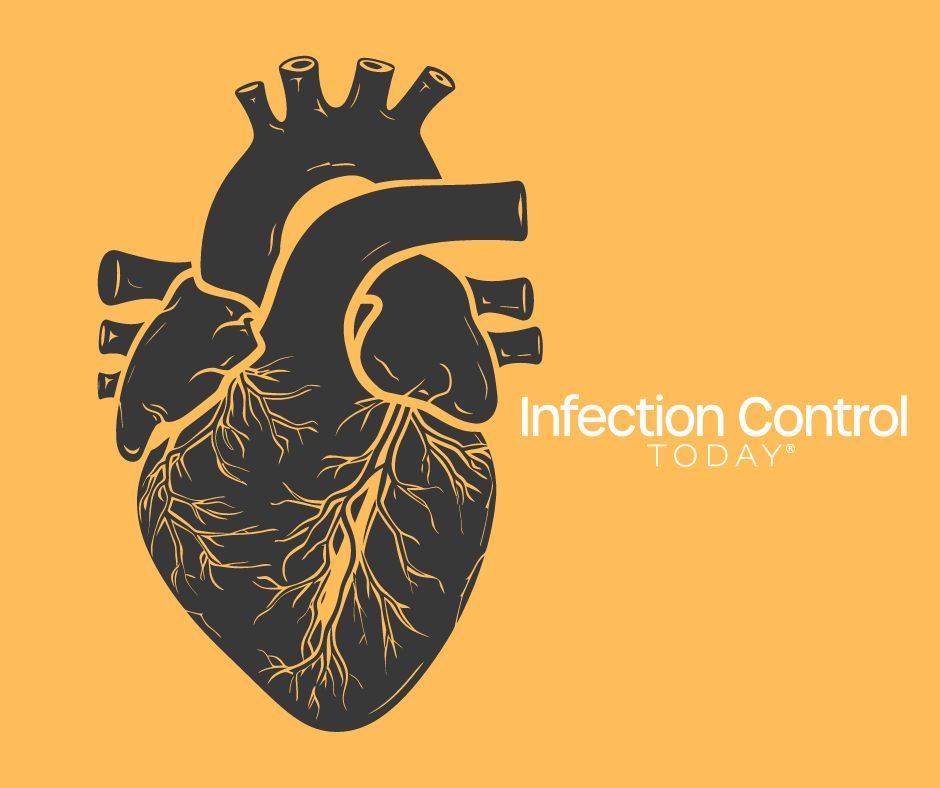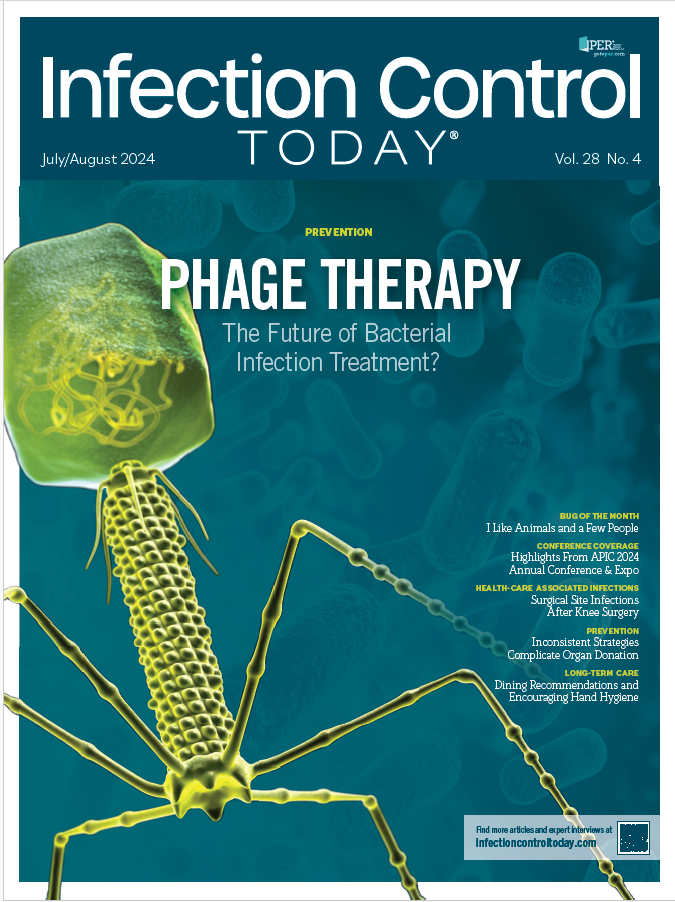Infection Prevention Implication for Organ Donation Program
Transplants are a crucial yet complex part of acute care. They involve various organs and tissues, necessitating robust infection prevention programs and compliance with strict regulatory standards.
Silhouette of heart
(Adobe Stock 765185323 by NikahGeh by AI)

Transplants are a scientific breakthrough that has helped thousands of patients. They are a complex and critical part of acute care for infection prevention programs. Many infection preventionists (IPs) may never encounter a transplant program in their career, as it is specialized and limited to facilities with robust surgical, critical care, and postacute resources to support successful programs. There are 2 types of transplants: solid organ and hematopoietic cell transplants. Additionally, donors can be live or deceased, depending on the organ or tissue donated.
The most common organ transplants in the US are the heart, lungs, kidneys, and liver.1 The most common tissues transplanted include bone, ligaments, tendons, corneas, skin, heart valves, and blood vessels.1 Numerous agencies are involved in transplant safety, including the Centers for Medicare and Medicaid Services, the US Food and Drug Administration, and the CDC. Each agency offers regulatory standards, best practices, education, and advocacy programs.
Screening transplant donors and recipients is essential to prevent disease transmission. The Association of Organ Procurement Organizations (AOPO) has specific guidelines for what types of infections will be tested on deceased donors. Resting and voluntary testing guidelines are required. The required testing includes cytomegalovirus (CMV), Epstein-Barr virus (EBV), syphilis, HIV, hepatitis B virus, hepatitis C virus, and Toxoplasma gondii.2
While OPOs require testing for select infections or pathogens, the manner of testing, which type of test to use, and the donor population they test may vary. For example, guidelines recommend the use of nucleic acid testing for hepatitis. However, not all OPOs may be able to receive the results before transplantation because a third-party lab performs the testing. Similarly, the types of testing for syphilis vary depending on the OPO, and it would be necessary for the receiving transplant providers to understand the interpretation of the varying tests and, again, how long the turnaround time or secondary tests may be before transplantation.2
Testing for seasonal and locally endemic diseases is also inconsistent across the country. These infections are voluntary to test; however, in some areas, many OPOs already perform testing for some of the most common infections resulting in posttransplant transmission. The Organ Procurement and Transplantation Network recently published a proposal to expand the required testing of deceased donors to include Strongyloides and Trypanosoma cruzi (Chagas disease).3 The intent is to identify early, before transplant, if the donor has antibodies. However, this proposal has potential negative impacts, namely that many OPO labs do not have the capabilities to test for these parasites, the requirement to test before transplant may not be feasible as turnaround time could be several days, and there is potential for false positives.3 All these considerations balance the broad screening to prevent disease transmission, the practicalities of what the OPOs can perform, and the varying resources available across the transplant programs.
The testing time frame for donors depends on whether the donor is deceased or living. Living donors will have more time for thorough interviews, risk assessments, and testing. Deceased donors typically only have several hours before procurement and transplantation, and interviews are based on next of kin or medical history. Living donors may receive more extensive testing based on risk assessment and the ability to complete confirmatory tests.
In addition to testing donors, there are recommendations for screening transplant recipients. Pretransplant candidates are often immunosuppressed due to long-term steroids or immunosuppression therapies and, while awaiting transplant, are at high risk for exposure and infections. Additionally, depending on the measures needed to treat the patient in organ failure, they could be at risk for other health care–associated infections, such as bloodstream infections, surgical site infections, and pneumonia.
Pretransplant infections need to be treated as quickly and thoroughly as possible. If the infection is related to a device, the recommendation is to treat and remove the device. The transplant is recommended to be delayed; however, there is no clear recommendation on how long to delay, and it is left to the clinical teams’ judgment.4
Transplant recipients should be screened for latent or active tuberculosis, histoplasmosis, syphilis, and coccidiomycosis (where endemic) in addition to the previously discussed infections.5 Patients with cystic fibrosis awaiting lung transplants should be screened for Burkholderia. Cases have shown that posttransplant patients colonized with Burkholderia had higher posttransplant morbidity and mortality compared with patients who were not colonized.4 Viral infections, such as CMV and EBV, have been found to increase adverse outcomes in transplant patients.5 If the recipient screens positive, transplantation should be delayed as long as possible until the infection resolves.
Another consideration for screening potential recipients is multidrug-resistant organisms (MDROs). There are no current guidelines requiring screening for specific MDROs, and there are limited studies that have looked at the outcomes for patients who are colonized pre- and posttransplant. For deceased donors, urine and blood cultures are collected, looking for any active infection but not specifically screening for MDROs of concern. If a transplant candidate has a medical device or implant, the risk of infection or colonization with an MDRO is increased. There is variation across transplant programs on the active screening of such MDROs as vancomycin-resistant Enterococci, carbapenem-resistant Enterobacteriales (CRE), and methicillin-resistant Staphylococcus aureus. It is generally recommended that colonization or active infection be treated before transplantation; however, for some patients with active CRE infections, there is some controversy about the ability of the host (patient) to survive, requiring a case-by-case review for each patient.5
Pretransplant patients should also receive certain vaccinations. The reemergence of vaccine-preventable diseases, such as measles, mumps, and polio, poses a threat to transplant patients. For example, varicella infection posttransplant has a high risk for severe morbidity and mortality.5 Pretransplant vaccination administration should be a routine part of a transplant program. Additionally, household contacts of transplant patients, especially for pediatric transplants, should be evaluated for vaccine status.
Another consideration for IPs is the testing protocols for organ donors for blood and urine cultures. The CDC surveillance definitions have specific guidelines and exemptions that require evidence that the OPO representative has consulted on the case and submitted documentation that the patient is accepted for donation. Until those specific items are documented in the patient chart, any positive cultures need to be reviewed as potential health care–associated infections.
For the IPs who support transplant programs, outbreak detection, and investigation skills must be at the forefront of the IP program. With a high-risk patient population, unusual organisms such as fungal or seasonal respiratory viruses can occur. Basic infection prevention strategies must be applied to help decrease the risk of health care transmission, including screening staff and visitors, enhanced hand hygiene practices, environmental cleaning and disinfection, and appropriate use of personal protective equipment.6
Transplant programs will have implications for isolation precautions. Often, immunosuppressed patients require extended isolation precautions for certain infections due to prolonged shedding. Additionally, hematopoietic stem cell transplant patients may be in protected environments. The IP must understand the requirements for a protected environment in their facility. Patient rooms must be under positive pressure, a minimum of 12 air exchanges are required, handwashing sinks should be available at the unit entrance, and antimicrobial scrubs and soaps should be available.
Construction and renovation activity in or near transplant units can be high risk. Performing a strong construction risk assessment with the team,
developing plans for air filtration and airflow to decrease the spread of dust and mold, and ensuring all construction staff who enter understand the importance of following the infection prevention recommendations are key to maintaining a safe unit. Similarly, live plants and fresh produce have been identified as potential sources of molds and are typically avoided in transplant units. Water quality may be another area where special filtration may be necessary to decrease the risk of waterborne pathogens in sinks and showers.
Infections are one of the common causes of morbidity and mortality post-transplant.6 Transplant programs are complex and require extensive additional knowledge and skills for an IP to provide appropriate surveillance, recommendations, and support. The many aspects of infection prevention needed to ensure a safe program require collaboration with a multidisciplinary team.
References
1. About transplant safety. Centers for Disease Control and Prevention. Updated February 26, 2024. Accessed June 14, 2024. https://www.cdc.gov/transplant-safety/ about/index.html
2. Theodoropoulis NM, Greenwald MA, Chin-Hong P, Ison MG. Testing deceased organ donors for infections: an organ procurement organization survey. Am J Transplant. 2021;21(5):1924-1930. doi:10.1111/ajt.16552
3. Improve deceased donor evaluation for endemic diseases. Organ Procurement & Transplantation Network. Health Resources & Services Administration. January 19, 2023. Accessed June 17, 2024. https://optn.transplant. hrsa.gov/policies-bylaws/public-comment/improve-deceased-donor-evaluation-for-endemic-diseases
4. Avery RK. Recipient screening prior to solid-organ transplantation. Clin Infect Dis. 2002;35(12):1513-1519. doi:10.1086/344777
5. Malinis M, Boucher HW; AST Infectious Diseases Community of Practice. Screening of donor and candidate prior to solid organ transplantation: guidelines from the American Society of Transplantation Infectious Diseases Community of Practice. Clin Transplant. 2019;33(9):e13548. doi:10.1111/ctr.1354
6. Pergam SA. Infection prevention in transplantation. Curr Infect Dis Rep. 2016;18(2):7. doi:10.1007/s11908-015- 0513-6

The Next Frontier in Infection Control: AI-Driven Operating Rooms
Published: July 15th 2025 | Updated: July 15th 2025Discover how AI-powered sensors, smart surveillance, and advanced analytics are revolutionizing infection prevention in the OR. Herman DeBoard, PhD, discusses how these technologies safeguard sterile fields, reduce SSIs, and help hospitals balance operational efficiency with patient safety.
Targeting Uncertainty: Why Pregnancy May Be the Best Time to Build Vaccine Confidence
July 15th 2025New national survey data reveal high uncertainty among pregnant individuals—especially first-time parents—about vaccinating their future children, underscoring the value of proactive engagement to strengthen infection prevention.
CDC Urges Vigilance: New Recommendations for Monitoring and Testing H5N1 Exposures
July 11th 2025With avian influenza A(H5N1) infections surfacing in both animals and humans, the CDC has issued updated guidance calling for aggressive monitoring and targeted testing to contain the virus and protect public health.
IP LifeLine: Layoffs and the Evolving Job Market Landscape for Infection Preventionists
July 11th 2025Infection preventionists, once hailed as indispensable during the pandemic, now face a sobering reality: budget pressures, hiring freezes, and layoffs are reshaping the field, leaving many IPs worried about their future and questioning their value within health care organizations.